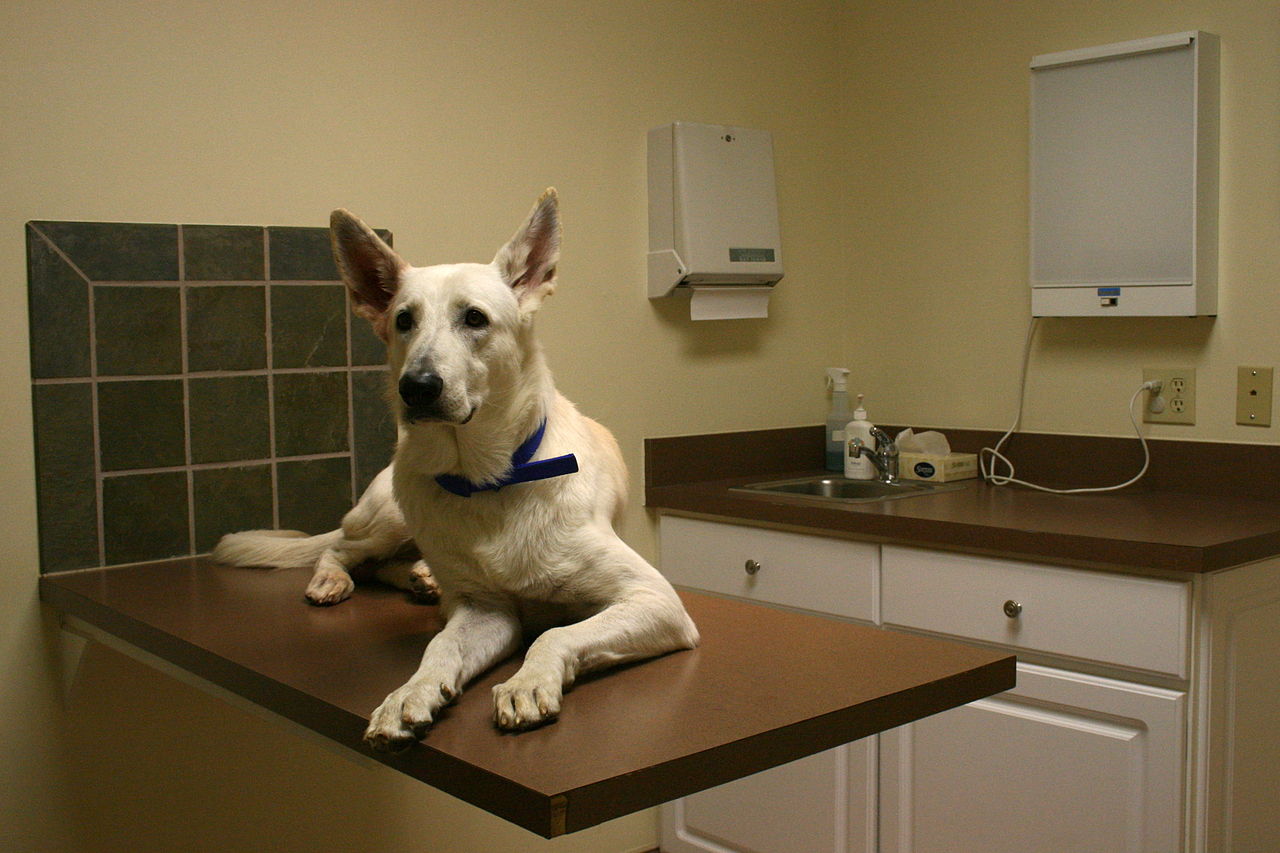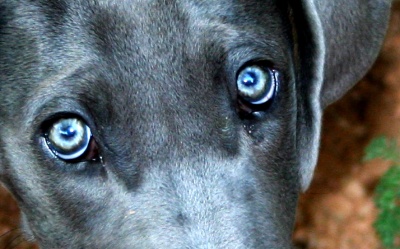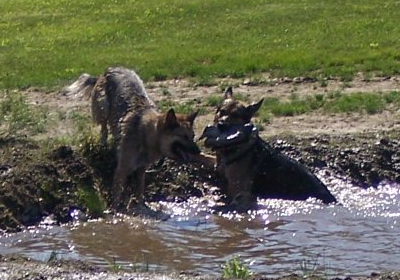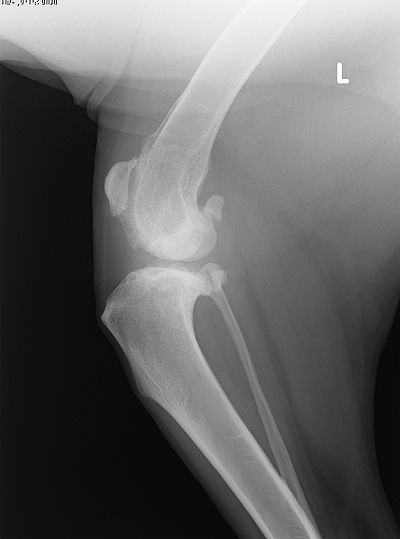Myelomalacia, also known as hematomyelia, is a progressive ischemic (local deficiency of blood supply) necrosis of the spinal cord. It is caused by injury to the spinal cord or disc disease. The necrosis begins at the site of the injury and then in time, moves in both directions, up and back. Symptoms include numbness and/or […]
Dog Diseases
There are a number of diseases dogs are prone to and I’ll talk about some of them here. I’ll also try to include specific breeds of dog that are prone to certain illnesses and diseases.
I would advise you to be aware of your dog’s normal behavior. Signs of illness can be lack of appetite, decreased activity, weakness, not drinking much, not grooming, bad breath, sleeping more than usual, drooling, vomiting, diarrhea, coughing, trouble breathing, frequent and/or bloody urination. If your dog exhibits any of these symptoms or any behavioral changes and you are unsure of what to do, seek the advice of your veterinarian.
Things you need to know:
The normal color of a dog’s gums is pink. Pale, white, blue or yellow gums, contact your vet at once.
Normal temperature for a dog is 100-102.5 degrees Fahrenheit. Less than 99 degrees or over 104 degrees, contact your vet immediately.
A dog’s heart rate slows and speeds with each breath. This is not abnormal. You can check the heart rate by finding the femoral artery inside the back leg. Small dogs and puppies heart rate is 120-160 beats per minute. Dogs that are about 30 lbs. have a rate of 60-120 beats per minute. The larger the dog, the slower the heart rate.
A dog’s normal respiration rate is 10-30 breaths per minute. Panting can be up to 200 pants per minute.
To check if your dog is breathing, hold a tissue or mirror up to his nose. If there is movement or breath on the mirror, your dog is breathing, but get him to the vet immediately.
Problem signs are using the abdominals to breathe, gasping, loud noises, shallow breaths, difficulty exhaling. Call your vet immediately.
If you have any questions, I’ll be happy to answer them.
Note: Many new pet owners do not know about the availability of pet health insurance. Insurance for your dog is a great safety net to have for unforeseeable emergencies or illnesses. It is also helpful in covering routine shots and exams. Some plans start at just five dollars a month. To compare pet insurance plans in your area check out the link above.

Thrombocytopenia in Dogs and Cats
Thrombocytopenia can affect both dogs and cats. It occurs when the blood platelet count is very low. Platelets are fragments of special cells that work to see that blood clots properly. If the platelet count is too low, bruising and bleeding occur. Thrombocytopenia can have several causes – low platelet production by bone marrow, increased […]

Nuclear Sclerosis in Cats and Dogs
Nuclear Sclerosis, sometimes called Lenticular Sclerosis is similar in appearance to cataracts and glaucoma, as the eye becomes cloudy. One of the differences is that with Nuclear Sclerosis, vision is usually not significantly affected. The parts of the eye concerned with nuclear sclerosis are: the cornea, the transparent tissue in front of the lens that […]

Degenerative Myelopathy
Degenerative Myelopathy is a disease in which there is a gradual loss of coordination and strength that begins in the hind quarters. About 80% of cases of Degenerative Myelopathy (DM) occur in German Shepherd Dogs, leading researchers to believe there is a genetic component to the disease in this particular breed. DM is usually seen […]
White Shaker Syndrome
White Shaker Syndrome, despite its name, can affect dogs of any color. However white dogs, particularly Maltese, West Highland White Terriers, Poodles and Bichons are likely to experience the syndrome. Both males and females can have White Shaker Syndrome. It usually appears in young to middle-aged dogs. White Shaker Syndrome (WSS) causes the dog’s entire […]

CCL (ACL) in Dogs
Injury to the Cranial Cruciate Ligament, CCL, also known as the Anterior Cruciate Ligament or ACL, is one of the most common problems of dogs. The knee joint becomes painful and can cause lameness and osteoarthritis. The CCL helps to stabilize the knee joint. An active dog puts a lot of stress on the ligament […]

SSR to Assess Heart Health in Pets
SSR or Sleeping Respiratory Rate is a valuable tool in assessing heart health in pets, particularly left side congestive heart failure (CHF). It is important to determine if CHF is present as medications are sometimes initially recommended for other cardiac diseases such as dilated cardiomyopathy, degenerative valve disease and hypertrophic cardiomyopathy. Measuring SSR is conducted […]

Glomerulonephritis in Pets
Glomerulonephritis is a kidney disease that while you may not have heard about it, is common in pets. It can be detected even in its early stages and is treatable. The glomerulus is the part of the kidney that filters waste, water and other chemicals from the blood which are then eliminated through urination. Filtering […]

Hypertrophic Osteopathy
Hypertrophic Osteopathy – HO – is the result of an underlying condition such as cancer. It occurs mainly in dogs who have osteosarcoma and have had a limb amputation and so are at higher risk for HO. Dogs whose cancer has metastasized to the lungs or where the lungs are the site of the primary […]

Anal Gland Cancer
Anal gland cancer, also known as adenocarcinoma, is an invasive cancer with a poor prognosis. Fortunately it is not one of the more common cancers in dogs and rare in cats. Anal gland cancer is seen as a rectal mass, often found in the lymph nodes as well. The tumor usually affects one anal sac […]
